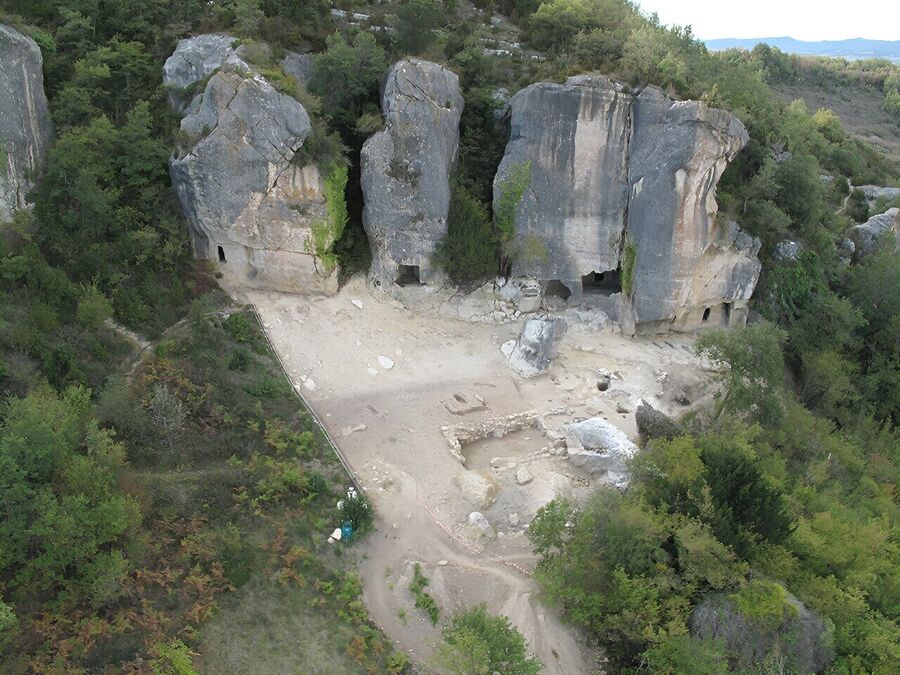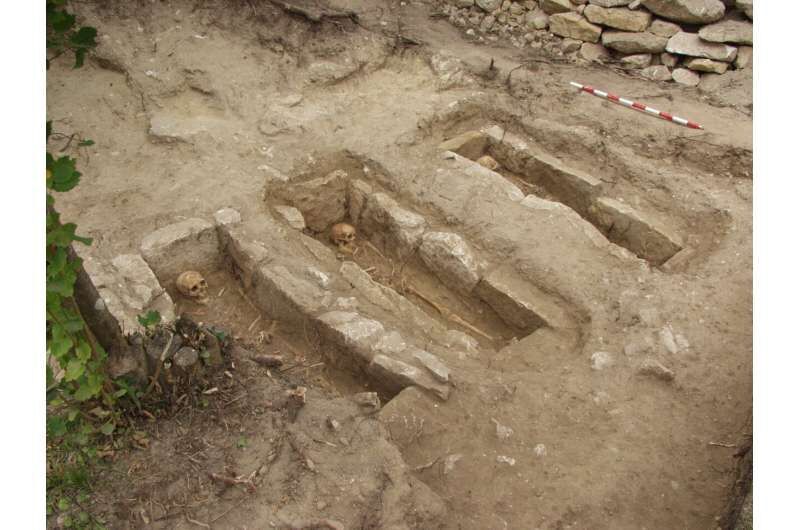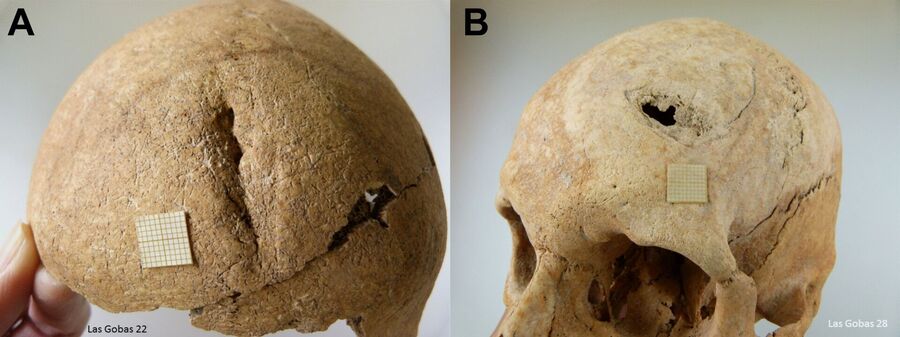
© GPAC (Grupo de investigación en Patrimonio Construido) Basque Country UniversityAerial view of the excavated area in the early medieval settlement of Las Gobas (Condado de Treviño, Spain). / GPAC (Grupo de investigación en Patrimonio Construido) Basque Country University.
Researchers from Sweden and Spain have conducted a comprehensive archaeogenetic study on a community that lived on the border between the northern Christian kingdoms and Al-Andalus during the early Medieval period. This dynamic era, especially in the Iberian Peninsula, was marked by religious competition, power struggles, and significant human mobility — factors that shaped the foundation of modern Europe.
The study, published in the journal Science Advances, focused on Las Gobas, a rural site in northern Spain's Burgos province, near the village of Laño. The community existed from the mid-6th to the 11th century and is notable for its church and living areas carved into caves. The site also provides evidence of violence, likely from sword blows, found on some of the buried individuals. Forty-one burials were excavated, and 39 of them were subjected to archaeogenetic analysis.
The interdisciplinary research, led by Ricardo Rodríguez Varela from the Centre for Palaeogenetics (CPG) in Stockholm, integrated genetic, archaeological, and historical data to reveal the presence of an endogamous community in northern Iberia that remained relatively isolated despite centuries of turbulent regional history.

© Lourdes HerrastiAerial photo of the burials.
Zoé Pochon, also from CPG, highlighted the discovery of several understudied pathogens in Las Gobas human remains. "For example, Erysipelothrix rhusiopathiae, a bacterium that causes skin disease through contamination of open wounds, often infects humans via domestic animals, suggesting that animal-keeping was important for this community."
She also identified the variola virus, the causative agent of smallpox, in an individual from one of the more recent burials. This specific strain is similar to those found in Scandinavia, Germany, and Russia, underscoring the pan-European presence of smallpox during the Middle Ages.
Comment: Interestingly, contrary to popular belief, research has suggested that variola virus, and not yersinia pestis, was the true cause of the mass mortality, plague outbreaks across much of the planet: Plague caused Neolithic populations to collapse across Europe around 3,000BC, new study suggests

© Lourdes HerrastiSkulls showing signs of violence.
This study provides new insights into the complex social, genetic, and health dynamics of a long-isolated community in early Medieval Spain.
More information: Ricardo Rodríguez-Varela et al, Five centuries of consanguinity, isolation, health and conflict in Las Gobas: A Northern Medieval Iberian necropolis, Science Advances (2024). DOI: 10.1126/sciadv.adp8625. www.science.org/doi/10.1126/sciadv.adp8625
Journal information: Science Advances
Source link

